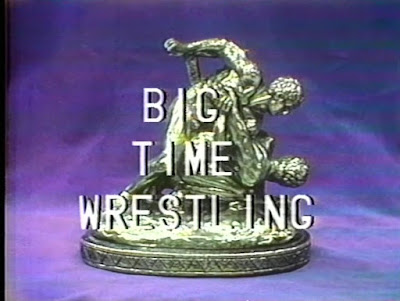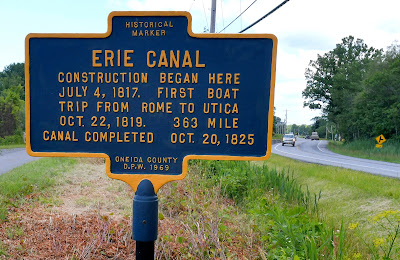 |
| Lou Klein |
Allen Park, Michigan resident Lou Klein began his pro-wrestling career in 1941 after dominating the Michigan amateur ranks and earning four national titles. In the beginning of his pro-career, Klein donned a mask and wrestled as the Green Hornet so he could earn a living while protecting his amateur standing. For a time, he wrestled with Red Bastien in a tag team, but most of his career he worked as a single performer known to be a "scientific" wrestler. Early on, Klein's tag line was "The Atomic Blond from Detroit" and later in his career "The Man of a Thousand Holds." His signature finish moves were the Boston Crab and the Atomic Drop.
After thirty-six years of competing in the squared circle, Klein retired on July 9, 1977.
Later in his career, Klein was known as a developer and promoter of new talent which he would manage into the professional ranks. In addition to teaching wrestling holds, and counter holds, he prepared new-comers for the professional ranks and pro-wrestling's code of Kayfabe--the representation of a staged event as genuine and authentic.
Kayfabe required wrestlers to stay in character in the ring and in public and not give away trade secrets. Kayfabe can be considered a verbal non-disclosure agreement. This three-syllable word is a Pig Latin carny term for "Be Fake" spelled backwards. If anyone came backstage who wasn't in the business for example, security or someone else would shout out "Kayfabe!" and the alert would travel through the ranks. Then, the wrestlers would put on their game faces for the press or whomever the interloper was.
In addition to his gym and wrestling school, Klein owned the local Tastee Freeze on Allen Road. Occasionally in the summer, Klein would set up a ring outside next to his gym or ice cream shop and let the kids play on it. Klein and some of his wrestling cohorts would teach the guys some grappling moves. My Allen Park High School friends Mick Osman and Earl Rennie made pocket money helping set up the ring for local promotions. Jack Ulrich remembers setting up and breaking down rings for Klein in Kingston, Ontario, Canada.
 |
| Heather Feather |
One of Lou Klein's proteges was Allen Park resident Peggy Jones. He first met Peggy when she was working the counter at the Thunderbowl bowling alley. At 5' 10" and weighing over 300#, Peggy always stood out from the crowd at North Junior High and suffered more than her share of verbal abuse and body shaming. Klein approached her about coming to the gym and begin training for a possible new career.
She did and four months later, Klein--acting as Peggy's manager--introduced her to Big Time Wrestling promoter Eddie (The Sheik) Farhat. What Peggy lacked in speed and wrestling prowess, she made up in bulk and strength. But there were two things Peggy needed to go pro--a gimmick and a stage name.
For a gimmick, Farhat had Peggy primarily wrestle men as a parody of feminism and the growing woman's equal rights movement of the 1970s. For a stage name, Farhat came up with Heather Feather. She wrestled throughout the Midwest, but Detroit was her home base. Feather would hang ringside during a bout and taunt the male wrestlers trying to shame them into a match. Then in an unscheduled ringside interview with the announcer, she would amplify her challenge making the men look weak and cowardly. The crowd loved it. Heather Feather was the first woman to wrestle and pin a man and soon became a fan favorite.
 |
| The Fabulous Moola and her crew. |
Her debut match was an eight-woman Battle Royale in Detroit at Cobo Hall. Several of the lady wrestlers with great effort threw the newcomer into the front row seats. Heather Feather was the first woman eliminated that night. Peggy was black and blue for her pains, but she was $200 richer. Her tenure lasted five years from 1973 until 1978.
Toward the end of her career, Feather wrestled an eight-foot-tall bear in an interspecies match. Victor, the bear, was found as an orphan cub and rescued. Pro-wrestler Tuffy Truesdell purchased the bear and trained him to wrestle humans. Victor wore a muzzle and was declawed. Truesdell and Victor toured the wrestling circuit as a novelty act. The bear was undefeated by over 100 men but could only get a draw against Feather. Once again, she bested the men but left the bear's undefeated record intact.
Heather Feather was one of the featured wrestlers in a wrestling mockumentary called I Like to Hurt People. In a rare break from the Kayfabe code of silence, the film's host Dr. Sonia Freidman asked Feather, "What's a nice twenty-three-year-old-girl doing in this racket?"
Out of character, Peggy answered, "It's really kinda hard to say. There are lots of reasons why I'm in it. Mainly it's a way of proving myself. A way of making me something in life. Have you ever met a girl built like Rosie Grier (famous 1960s football player)? I've been this tall and this weight since I was twelve. I won't lie, it was tough growing up."
When Dr. Freidman asked Feather how long she thought she would last in her chosen profession, she answered truthfully, "A girl can only last as long as she looks young. As soon as she starts looking old, she's done for. A man can do this until he drops dead in the ring." It wasn't long after this candid interview that Heather Feather was released from her wrestling contract. Kayfabe had been violated.
After her pro-wrestling career, Peggy Jones (Heather) became a mother and raised her daughter in Taylor, Michigan. She died of cancer in 2014.


























